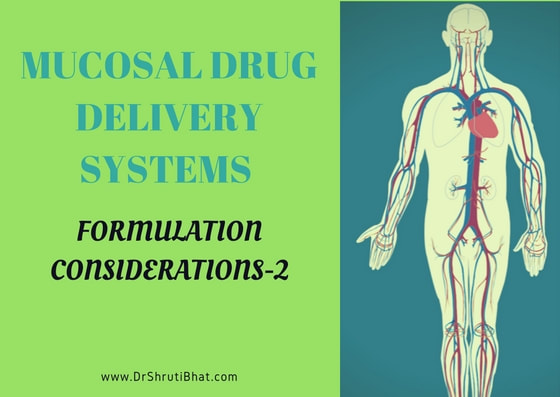- What is the rate & time course of systemic drug input (i.e. the input function i(t) that will maximize the therapeutic effect of the compound, minimize side effects and prevent if possible the development of tolerance (tachyphylaxis)?
- What routes of administration (and associated pharmaceutical technologies) will provide the best means for achieving this input function in a safe, efficacious, reliable, “patient friendly” and cost-effective manner ?
The following equation provides a simple theoretical framework for assessing the rate limiting steps responsible for the bioavailability (F) of polypeptides given by the transmucosal route:
F =[ TLM ] [ TM ____]
TLM + DL + EL TMB + DM
Where in,
L = human, M = mucosa, B = bloodstream, EL =Elimination from absorption site (pre absorption clearance)
This mechanistic information is valuable for selecting appropriate routes of administration as well as for developing rational strategies to enhance the bioavailability.
Factors governing mucoadhesion:
The bioadhesive power of a polymer or a series of polymers is affected by the nature of the polymer and also by the nature of the surrounding media:
1. Polymer related factors:
- Molecular weight
- Concentration of the active polymer
- Flexibility of polymer chains
- Spatial conformation
- Polymer swelling index.
2. Environmental related factors:
- pH
- Applied strength of adhesives
- Initial contact time
- Selection of model substrate surface
- Concentration of water or water content in substrate
3.Physiologic variables:
- Mucin turn over
- Disease state
- Histology of organ (epithelial tissue)
In the next post we shall discuss on techniques used to study muco-adhesion.





















